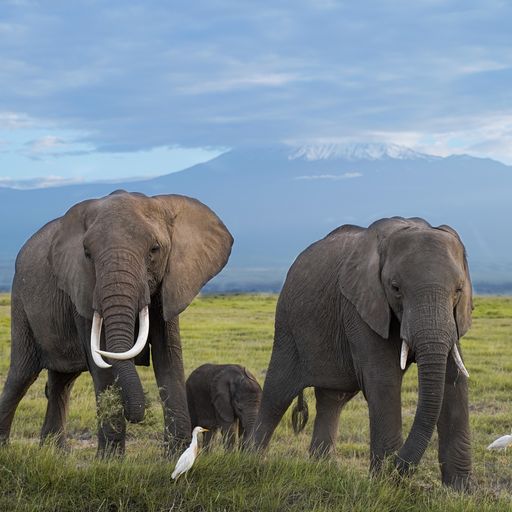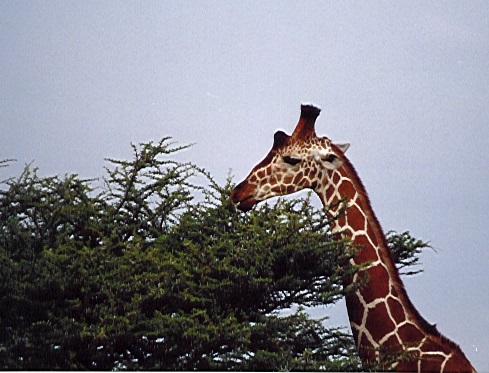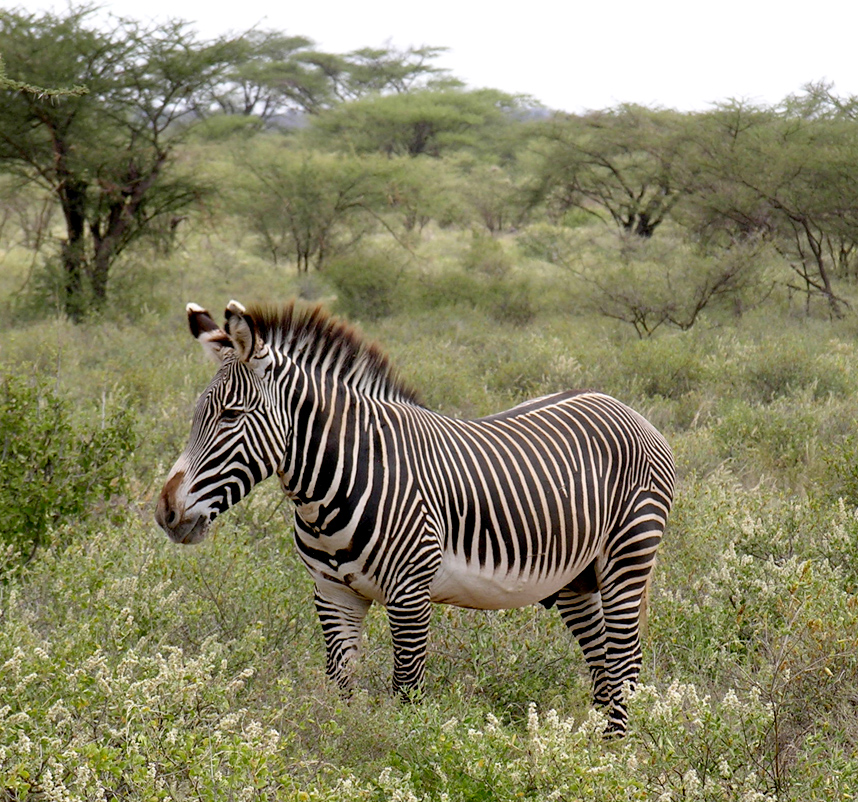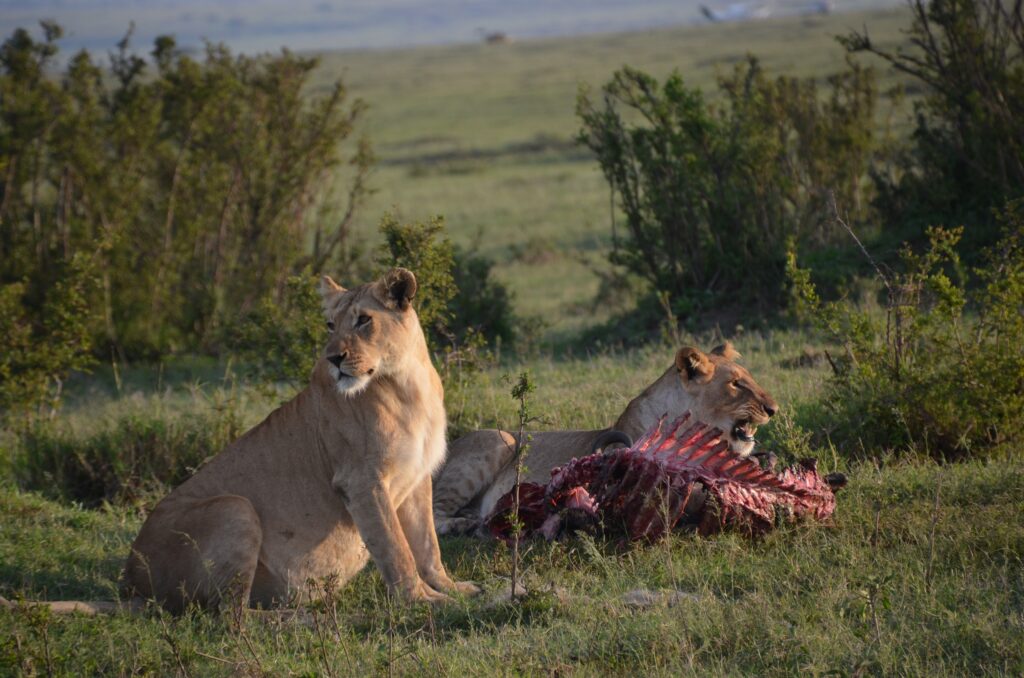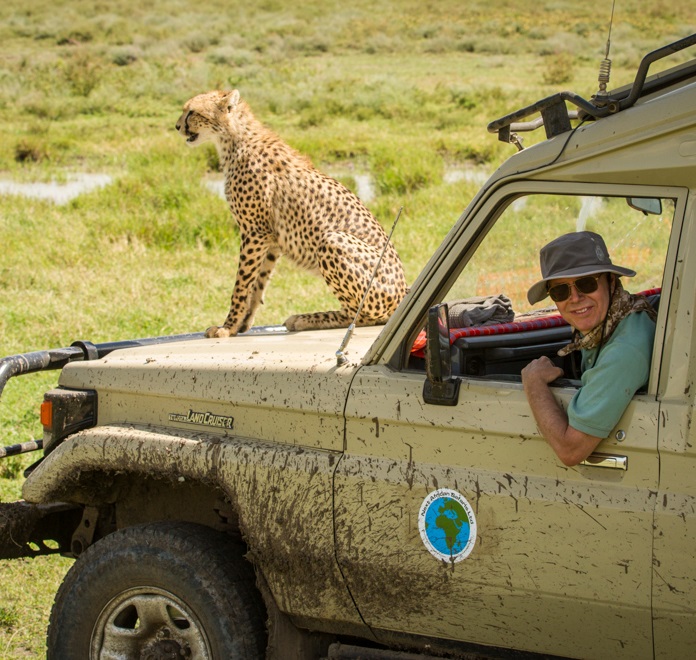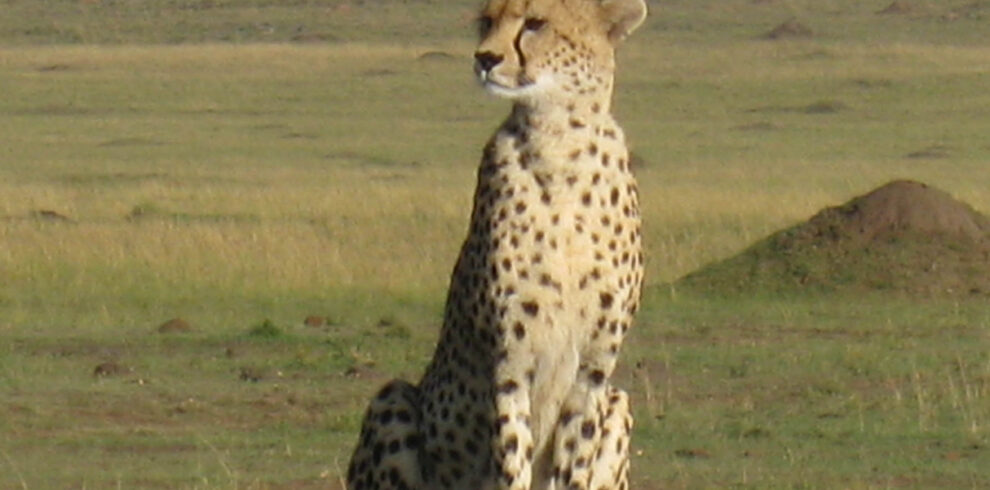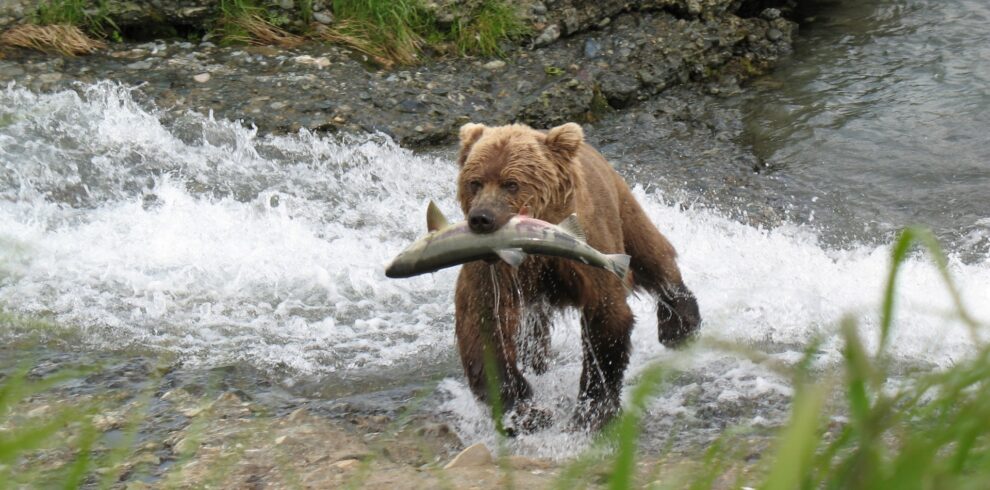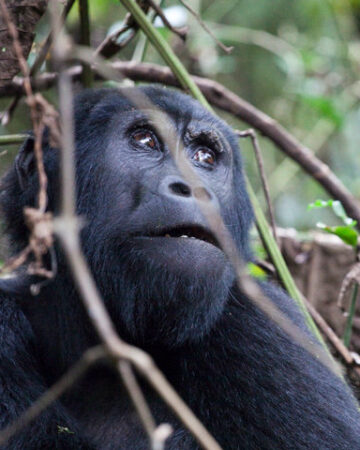Overview
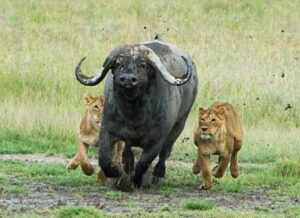 Guided by Jim Heck
Guided by Jim Heck
August 13 – 25, 2024
$13,940
The half-year rainy season ends in May. The sky clears, it gets hotter and dustier, the grass dwindles and life on the savannah grows perilous . . .
This is Thanksgiving for the predators. The guttural roars of the lion and screams of the hyaena pierce the still, languid nights.
The difference between the seasons is more severe in Tanzanian game parks than in Kenyan parks. That’s the reason this main safari is all-Kenya, but a simple Tanzanian extension is available featuring its one park that is good in the dry season as well as the iconic Ngorongoro Crater.
| 2024 | Sharing | Single | Local Air | ||
| Kenya | Aug 13 – 25 | Per Adult | $ 13,940 | $ 15,910 | $ 1,113 |
| Kenya | Aug 13 – 25 | Per Child | $ 11,140 | $ 15,620 | $ 1,004 |
| Tanzania | Aug 25 – 31 | Per Adult | $ 4,595 | $ 5,085 | $ 528 |
| Tanzania | Aug 25 – 31 | Per Child | $ 3,970 | $ 5,085 | $500 |
About your guide . . . . JIM HECK
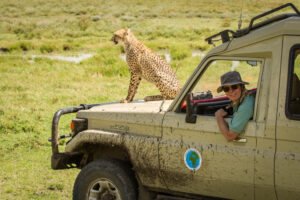 Few people know East Africa as well as Jim Heck. For nearly a half century he has worked, lived and guided in sub-Saharan Africa. His popular blog, AfricaAnswerman, includes investigative journalism of some of Africa’s most critical news stories as well as anecdotes and features of daily African life. His award-winning novel, Chasm Gorge, will soon be followed by a second one, The World by Ole Sarut.
Few people know East Africa as well as Jim Heck. For nearly a half century he has worked, lived and guided in sub-Saharan Africa. His popular blog, AfricaAnswerman, includes investigative journalism of some of Africa’s most critical news stories as well as anecdotes and features of daily African life. His award-winning novel, Chasm Gorge, will soon be followed by a second one, The World by Ole Sarut.
His companies have organized safaris into Africa for more than 20,000 visitors including most of the country’s major zoos and conservation organizations. In 2016 he became the first American guide to be named an honorary senior elder by Kenya’s Maasai tribe.
Jim was the first westerner allowed to leave Addis after the Red Terror; had canoes overturned among crocs and hippos on the Zambezi; been charged by an elephant that he hit with a plate of waldorf salad; lost in the jungles of Cameroun; marooned in the Ituri Forest and rescued by Rhodesian sanction busters; and was among the few outsiders to travel through Uganda during the rule of Idi Amin. Jim has never lost a client or fired a gun.
Click for the Reservation Form to reserve your spot on this amazing tour!
Itinerary
Whenever you arrive at Nairobi’s international airport, you’ll be personally met and privately transferred to Hemingway’s Resort in the posh suburb of Karen.
[no meals]
Few cities in Africa have developed as quickly as Nairobi and fewer still have such a deep colonial and pre-colonial history. Today Jim takes you to several important city attractions for a quick view of modern Kenyan life.
Start with the nearby Giraffe Centre where you’ll see some rare subspecies up-close! Close enough, in fact, to feed them or elicit a big kiss! Like many big animals in Africa, giraffe numbers are declining and Jim will discuss the new discoveries trying to explain this.
Then Jim takes you to the city center for a visit to the National Museum famous for its displays and warehousing of early man artifacts and bones! No paleontologist today can further her career without spending time here, for there are more early man items carefully curated and preserved in Nairobi than in any other museum on earth. Jim will also show you “Ahmed,” the remains of one of the world’s largest elephants, and discuss with you his view that there are too many elephants, today.
Time permitting, you’ll then walk down the city center’s history lane as Jim describes everything from the early explorers to modern coups.
Overnight at Hemingway’s Resort.
[b- - ]
Early transfer to the nearby, local Wilson airport for the flight into Kenya’s largest park, Tsavo West. Jim’s Kenyan staff and vehicles will be waiting for everyone and the game viewing begins immediately!
Tsavo West is one of the few wildernesses in Africa that has actually improved through climate change, recovering from the horrible 1980-years of poaching to once again have one of the largest elephant populations on the continent. This is in part because it’s not good for much else! The red-earth soil and scrubby bushland is even a challenge for ranching, much less any other kind of farming. So once poaching was curtailed, its wilderness bloomed!
In addition to elephant the game viewing today will likely encounter a number of antelope like impala and Grant’s gazelle, and with luck the rare gerenuk. Found in these desert-like regions, this peculiarly looking long-necked antelope never drinks after it stops suckling.
There are many myths about what constitutes the best routine for game viewing. Jim discards these easily and bases his schedule on what’s actually happening in the area with other guides and drivers. Each evening he’ll gather you before dinner around the campfire or during sundowners to discuss with you what he’s learned and suggest a plan for the next day.
Meals and overnight at Severin Safari Camp.
[b-l-d]
Like its sister park, Amboseli, the water sources in Tsavo have always come from Africa’s highest mountain, Kilimanjaro, and they are constant year-round. This is why there’s not a lot of difference in Tsavo between the “dry” and “wet” seasons. Its natural ecosystem has never enjoyed much rain. During some of the game viewing, today, Jim might take you to “Mzima Springs” where an underground river off Kilimanjaro erupts into a beautiful clear pool that attracts hippos, lots of monkeys and exotic birds.
There are plenty of lions, too! The famous “Man-Eaters of Tsavo” don’t, anymore - honest! They’ve got plenty else that’s much better for them than one of us! And recently wild dog has been spotted in the area of our camp, a real success story that Jim will tell you about in great detail.
Meals and overnight at Severin Safari Camp.
[b-l-d]
With luck you’ve already seen Mt. Kilimanjaro! But this morning we leave Tsavo West and head to Amboseli, getting closer and closer to Africa’s highest mountain! We should arrive at our beautiful camp well in time for a comfortable lunch in the actual foothills of this beautiful old volcano. There’s no other property in Kenya closer than this.
Then in the afternoon you’ll enjoy your first game drive in Amboseli. Much smaller and contained than Tsavo West, Amboseli is an unique ecosystem that is actually a giant soda lake fed by underground rivers from Kili. Most of the time this means much of the park is a wetland or swamp, beautifully lush and attracting all sorts of game and birds. The rest of the park is a massive flatland with grasses depending upon the bits of rain it gets from time to time.
So despite its smaller size it attracts a huge number of elephant, and while the total numbers are less than Tsavo’s, the density is higher. Amboseli’s elephants have been studied more than anywhere else in Africa and all good conservation of this mighty jumbos comes from this park’s research.
Dinner and overnight at Elerai Camp.
[b-l-d]
Game viewing today is likely to encounter large families of impala and big groups of both Thompson’s and Grant’s gazelle. There are also large numbers of Cape Buffalo, hartebeest and sometimes, the rarer oryx. There are plenty of cats and the flatlands are perfect for witnessing cheetah hunts. So much more than just elephant, although undoubtedly they will dominate the game viewing.
Because of Amboseli’s peculiar ecology, this is the safari’s best park for seeing all sorts of exotic, colorful birds. Look for hornbills, storks, vultures, all sorts of eagles and hawks, and a huge array of bee-eaters and kingfishers, including the spectacular malachite and pygmy kingfishers.
Dinner and overnight at Elerai Camp.
[b-l-d]
The intense four days of game viewing in the shadow of Mt. Kilimanjaro ends today with the drive back to Nairobi. The afternoon and evening are free.
Overnight at Hemingway’s Resort.
[b- - ]
Early transfer to the local Wilson airport for a spectacular flight around Mt. Kenya into the Great Northern Frontier. Weather-permitting, this dramatic route goes right by the great glaciers of Mt. Kenya, Africa’s second highest mountain.
As you look out your window as the small plane descends from Mt. Kenya you might wonder why on earth you’re traveling into this seemingly desiccated landscape. But just before landing the plane zooms over the Ewaso Nyiro river which flows off the Aberdare and the desert blooms! Enormous amounts of big game – much of it extremely rare – is found here. The area is known as the Kalama Conservancy just north of Samburu National Park.
It’s a short ride to Samburu Saruni Lodge for lunch. Then in the afternoon the local guides will drive you around this enchanting reserve with its rare game and spectacular scenery. Dinner and overnight at the lodge.
[b-l-d]
The landscape of Samburu is possibly the most picturesque on safari: huge doum palms tower from the river bank over what becomes a dry, sand river from time to time. In fact the water always flows underground even when it appears dry on the surface. This attracts large numbers of elephant that dig deep holes for the pure water, and that in turn draws all sorts of other game.
Inland from the river are beautiful acacia bushlands mixed in with various types of cactus. There’s a large cat population, including leopard, lion and cheetah. But the highlight of a Samburu game drive is discovering the incredibly rare and endangered game found here.
There are less than 3,000 Grevy’s Zebra left in the wild. Very obviously different from the great plains zebra that will dominate so much of our game viewing elsewhere, this seemingly languid, donkey-like striped animal can live only in these water-stressed environments. The magnificent Beisa oryx looks like a unicorn in profile, and there are all sorts of brilliantly colored desert birds, like the vulturine guinea fowl and rosy-patched bush shrike. None of these is regularly found elsewhere on safari.
Meals and overnight at Samburu Saruni Lodge.
[b-l-d]
The magnificent three-day ending to this exciting safari starts with another dramatic small-plane flight from the Samburu desert over the Great Rift Valley with its many lakes and onto the endlessly rolling grassland plains of Kenya’s finest wilderness, the Maasai Mara.
Landing is scheduled for around noon in the most productive part of the Mara. Professional driver/guides with their specially outfitted vehicles will take the group from the airstrip into camp for lunch before the first game drive. All the game drives in the Mara will be directed towards the Great Migration. This phenomenal event is very weather-dependent, however, so it simply can’t be guaranteed during this time of extreme climate change. But Jim’s 2023 Dry Season safari in August was successful finding the migration in The Mara, and in viewing a signature river crossing of the herds.
Meals and overnights at Governors Private Camp.
[b-l-d]
Two more fantastic days in the Mara at the best time of the year for its always outstanding game viewing!
The gently rolling grasslands of the Mara never disappoints even the most demanding imaginations of what Africa should be! The numerous rivers including the great Mara itself cut beautiful swaths of fast-running, sometimes white water through the hills and are lined with gorgeous thick forests. This provides a great range of habitat for all the antelope, big cats, buffalo and more. So whether the Great Migration is actually experienced or not, game viewing is still likely to be the best on the trip.
Meals and overnight at Governors Private Camp.
[b-l-d]
One final, fantastic day of gameviewing in the Mara!
The final night around the campfire Jim will help you digest this momentous trip and everything you’ve managed to see and experience! There is simply nothing like an African safari for inspiring the soul and nothing comes close to the drama and beauty that a guide as experienced as Jim can provide you!
Meals and overnight at Governors Private Camp.
[b-l-d]
If this is the end of your adventure, you will enjoy a final morning of game viewing before flying from the Mara back to Wilson airport in Nairobi. Vehicles will be waiting to transfer everyone to Nairobi’s main international airport. Everyone gets a room at the comfortable airport hotel to get ready for the departures home, which are usually late at night. The hotel shuttles guests twice hourly to the terminals.
[b- - ]
If you are taking the Tanzania extension, you will leave earlier on a flight west towards Lake Victoria, arriving in the town of Migori around 9 am. Your seven-day postsafari tour of Tanzania is detailed on the "Tanzania Postsafari, August 2024" page.
Cost Includes
- Accommodations and meals as named
- Transport in specially outfitted 4x4 safari vehicles with pop-top roofs operated by professionally-trained, English-speaking driver/guides
- All government fees including park entrance fees, property concession fees, transport fees and V.A.T.
- Comprehensive guiding by Jim Heck after a minimum of six persons reserve. If fewer reserve the trip will be guided by someone else.
Additional Expenses Not Included
- Costs of local air fares within Kenya and Tanzania which can change at any time before purchase: those fares as of August 26, 2023, are shown on the Reservation Form. You may lock in air fares by paying them at any time.
- All international air fares
- Visas
- Tipping (Jim Heck does not accept tips)
- The costs of obtaining requisite inoculations and documentation
- Some meals and most beverages
- Anything personal like medical preparations or gear

